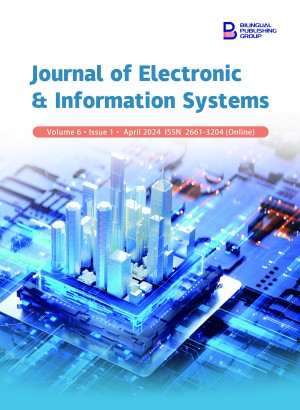Ground Surface Deformation Prediction Using Machine Learning Approaches
DOI:
https://doi.org/10.30564/jeis.v6i2.8201Abstract
This study aims to investigate the use of machine learning algorithms to predict the settlements of the ground surface triggered by tunneling using a shielding method. First, a 2D tunnel calculation scheme was proposed for nonlinear construction stage analysis using the “contraction” load, which can be used to simulate the soil volume loss. Further, this model was verified by comparing the solution with the analytical method and numerical simulation, which uses standard modeling approaches, including in the spatial formulation. Then, after briefly describing the main theoretical substantiation of machine learning techniques, the 2D scheme was used to create the dataset. Finally, the dataset was processed by the machine learning algorithms: linear regression, decision tree, random forests, polynomial regression, ridge regression and neural network, which showed the best forecasting ability (R2 = 0.985; RMSE = 0.000986). The results indicate that machine learning can provide a robust approach for predicting ground settlements, mitigating risks associated with tunneling operations. Additionally, this research highlights the potential of integrating advanced computational methods with traditional engineering analyses, enhancing the accuracy and efficiency of settlement prediction. Future work will explore the applicability of these algorithms to different soil and geological conditions, aiming to further improve predictive models in geotechnical engineering. By establishing a strong correlation between simulated parameters and machine-learning outcomes, this study opens avenues for more intelligent and adaptive tunneling practices.
Keywords:
Subway; Tunnel; Forecasting Ground Surface Settlement; Machine learning; Artificial Neural Network; Decision TreeReferences
[1] Rashidi Nasab, A., Elzarka, H., 2023. Optimizing machine learning algorithms for improving prediction of bridge deck deterioration: A case study of Ohio bridges. Buildings. 13(6), 1517. DOI: https://doi.org/10.3390/buildings13061517
[2] Bhatta, S., Dang, J., 2023. Seismic damage prediction of RC buildings using machine learning. Earthquake Engineering & Structural Dynamics. 52(11). 3504–3527. DOI: https://doi.org/10.1002/eqe.3907
[3] Dang, L.M., Wang, H., Li, Y., et al., 2022. Automatic tunnel lining crack evaluation and measurement using deep learning. Tunnelling and Underground Space Technology. 124. 104472. DOI: https://doi.org/10.1016/j.tust.2022.104472
[4] Liao, J., Yue, Y., Zhang, D., et al., 2022. Automatic tunnel crack inspection using an efficient mobile imaging module and a lightweight CNN. IEEE Transactions on Intelligent Transportation Systems. 23(9), 15190–15203. DOI: https://doi.org/10.1109/TITS.2021.3138428
[5] Li, C., Li, J., Shi, Z. et al., 2022. Prediction of surface settlement induced by large-diameter shield tunneling based on machine-learning algorithms. Geofluids. 2022(1), 4174768. DOI: https://doi.org/10.1155/2022/4174768
[6] Liu, L., Zhou, W., Gutierrez, M., 2023. Physics-informed ensemble machine learning framework for improved prediction of tunneling-induced short- and long-term ground settlement. Sustainability. 15(14), 11074. DOI: https://doi.org/10.3390/su151411074
[7] Park, K.H., 2004. Elastic solution for tunneling-induced ground movements in clays. International Journal of Geomechanics. 4(4), 310–318. DOI: https://doi.org/10.1061/(ASCE)1532-3641(2004)4:4(310)
[8] Lee, K.M., Rowe, R.K., Lo, K.Y., 1992. Subsidence owing to tunnelling. I. Estimating the gap parameter. Canadian Geotechnical Journal. 29(6), 929–940. DOI: https://doi.org/10.1139/t92-104
[9] Miller, M.R., Titov, E.Y., Kharitonov, S.S., et al., 2022. The stress-strain state of the tunnel lining that crosses the fault zone of soil blocks during an earthquake. Communications-Scientific Letters of the University of Zilina. 24(1), D9–D22.
[10] Miller, M., Yong, F., Hu, L., et al., 2023. Prediction of subway vibration values on the ground level using machine learning. Geotechnical and Geological Engineering. 41(6), 3753–3766. DOI: https://doi.org/10.1007/s10706-023-02486-6
[11] McNeish D. M., 2015. Using Lasso for predictor selection and to assuage overfitting: A method long overlooked in behavioral sciences. Multivariate Behavioral Research. 50(5), 471–484. DOI: https://doi.org/10.1080/00273171.2015.1036965
[12] Fausett, L.V., 1993. Fundamental of neural networks: Architectures, algorithms, and applications. Pearson Education India: New Delhi, India. p. 480.
[13] Afandi, A., Lusi, N., Catrawedarma, I.G.N.B., et al., 2022. Prediction of temperature in 2 meters temperature probe survey in Blawan geothermal field using artificial neural network (ANN) method. Case Studies in Thermal Engineering. 38, 102309. DOI: https://doi.org/10.1016/j.csite.2022.102309
[14] Patel, N., Upadhyay, S., 2012. Study of various decision tree pruning methods with their empirical comparison in WEKA. International Journal of Computer Applications. 60(12), 20–25. DOI: https://doi.org/10.5120/9744-4304
[15] Song, Y.Y., Ying., L.U., 2015. Decision tree methods: Applications for classification and prediction. Shanghai Archives of Psychiatry. 27(2), 130. DOI: https://doi.org/10.11919/j.issn.1002-0829.215044
[16] Breiman, L., Friedman, J., Olshen, R.A., et al., 1984. Classification and Regression Trees, 1st ed. Chapman and Hall/CRC: New York, US. DOI: https://doi.org/10.1201/9781315139470
[17] Loh, W.Y., Shih, Y.S., 1997. Split selection methods for classification trees. Statistica Sinica. 7, 815–840.
[18] Breiman, L., 2001. Random forests. Machine Learning. 45(1), 5–32. DOI: https://doi.org/10.1023/A:1010933404324
[19] Cocco, L.J., Ruiz, M.E., 2018. Numerical implementation of hardening soil model. In: Cardoso, A., Borges, J., Costa, P., et al. (eds.). Numerical Methods in Geotechnical Engineering IX, Volume 1. CRC Press: London, UK. pp. 195–203.
Downloads
How to Cite
Issue
Article Type
License
Copyright © 2024 Miller Mark, Fang Yong, Kharitonov Sergey, Akulich Vladimir, Noskov Ivan

This is an open access article under the Creative Commons Attribution-NonCommercial 4.0 International (CC BY-NC 4.0) License.




 Miller Mark
Miller Mark






